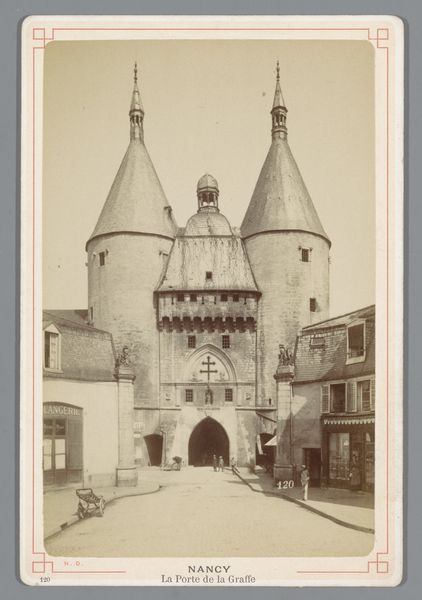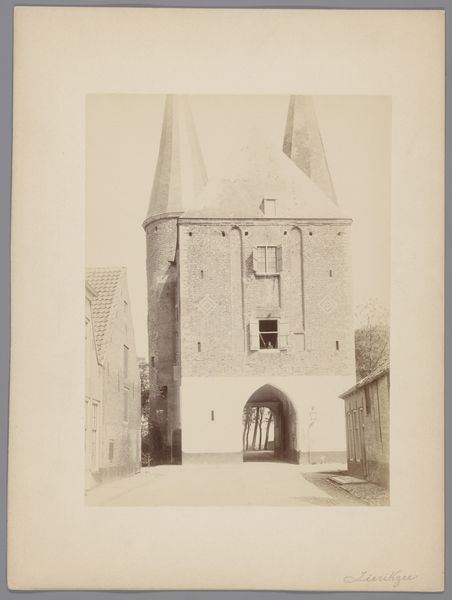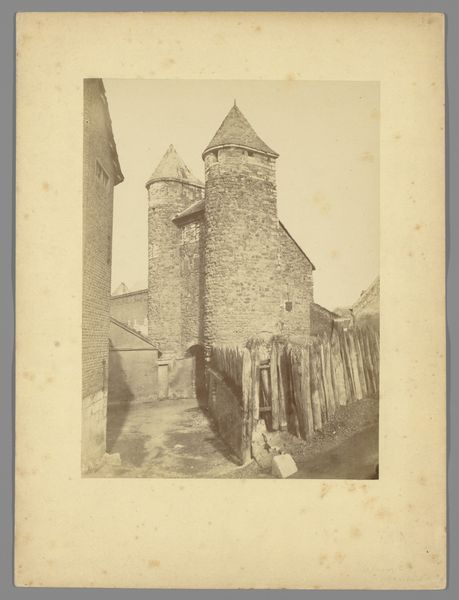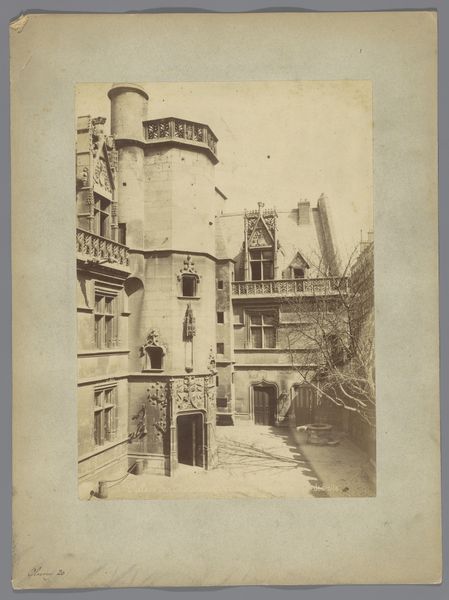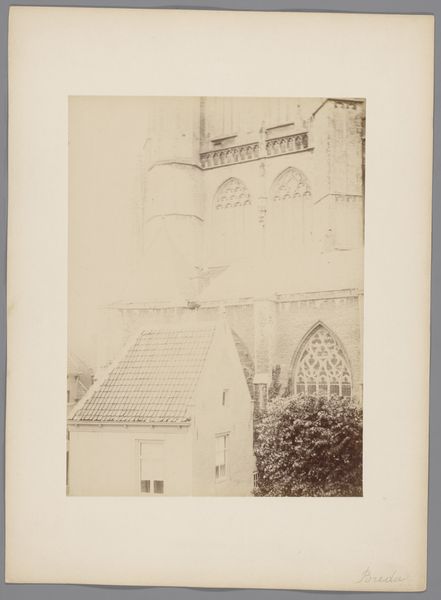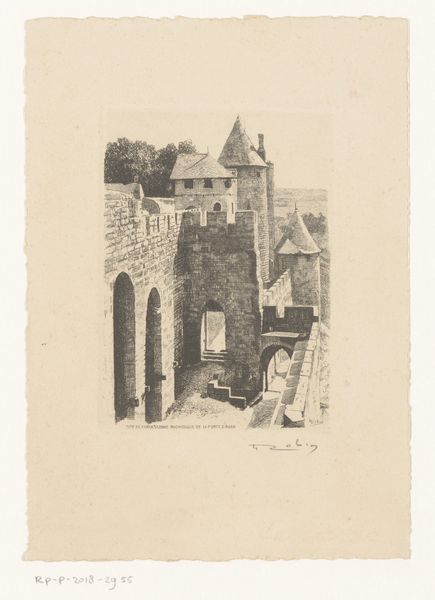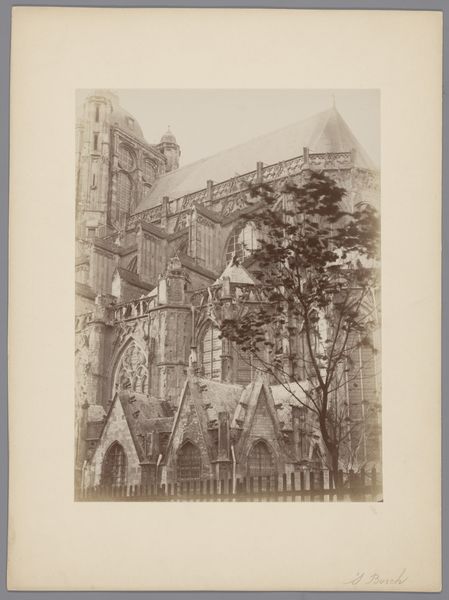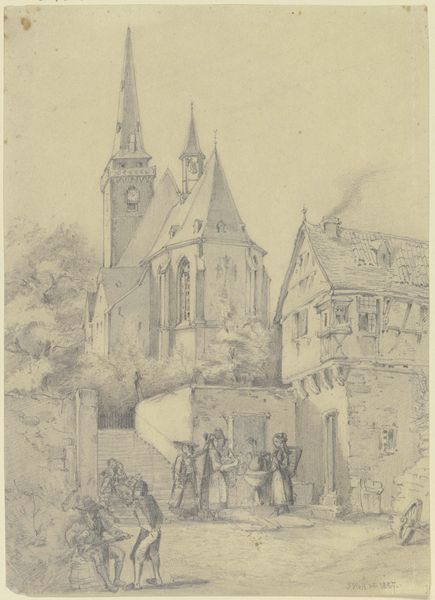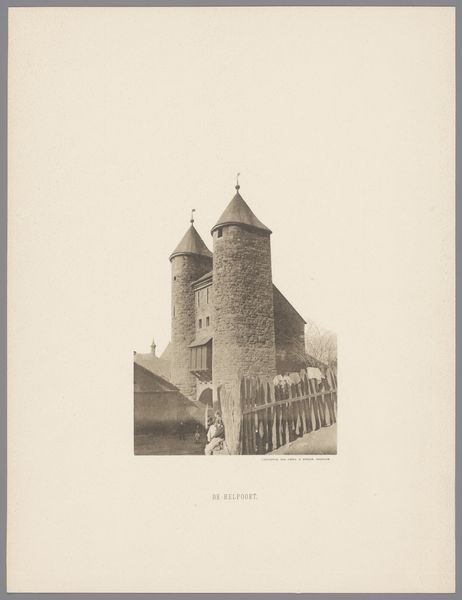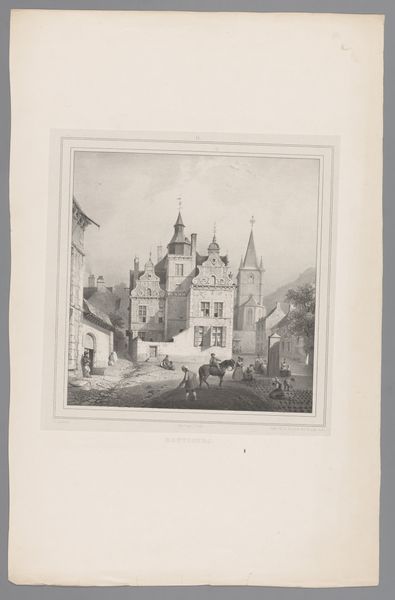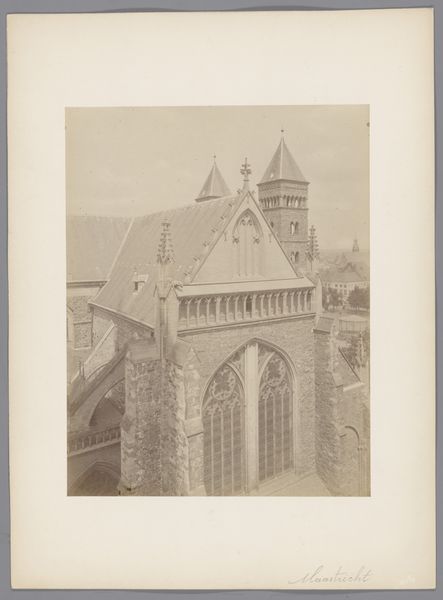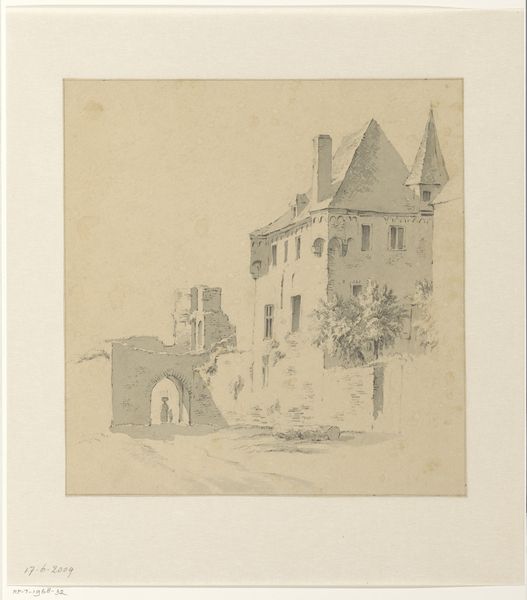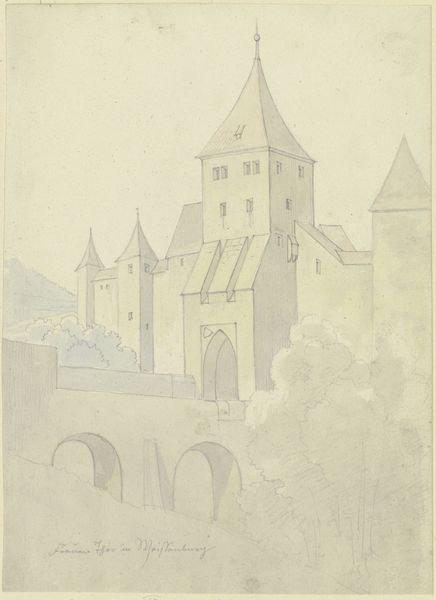
Gezicht op de kapel van het Kasteel van Châteaudun c. 1875 - 1900
0:00
0:00
medericmieusement
Rijksmuseum
print, photography, site-specific, albumen-print
# print
#
landscape
#
photography
#
site-specific
#
cityscape
#
albumen-print
Dimensions: height 349 mm, width 239 mm
Copyright: Rijks Museum: Open Domain
Curator: My first impression is almost dreamlike, with the warm sepia tones imbuing the photograph with a real sense of nostalgic yearning. Editor: That's interesting because this image, "Gezicht op de kapel van het Kasteel van Châteaudun," was taken by Médéric Mieusement, sometime between 1875 and 1900. It's an albumen print, a very popular photographic process back then. What I notice is this interesting dichotomy between the sharp architectural details on the right, and the soft focus of the main structure behind. Curator: Yes! And I think that tension works beautifully. The almost ghostly form of the chapel evokes this sense of history as a thing that is solid, beautiful, awe-inspiring but always somehow out of our reach in some way. It’s always disappearing into a kind of... sepia-toned past. Editor: You've put your finger on something important. The out-of-focus effect could be accidental, but given that the photographer printed specifically this moment of sharpness, of relative sharpness… Curator: Relative being the key word! Editor: ... relative sharpness I think Mieusement must have seen the emotional potential there, and must have used that to communicate his understanding of time, that all that can be grasped in an instant fades eventually into something just beyond our grasp. Curator: It's the human condition encapsulated in sepia, wouldn't you say? And those dark crenellations and other gothic adornments so boldly portrayed feel representative of how memory embellishes history and our recollection of it. It's both an idealized memory and a tangible object simultaneously. Editor: Exactly. That gothic detail speaks volumes – gargoyles, trefoils, quatrefoils – each a potent symbol from the medieval and early Renaissance periods. Symbols of protection, faith, the four Evangelists. They root the viewer in a specific historical and iconographic context even while time itself drifts around the architecture as you suggest. Curator: This has given me a new appreciation for photography’s unique talent. It’s so difficult to hold opposing temporal perspectives, but to see it realized here, as an eternal dance between the present moment and its ever-fleeting shadow is rather a potent vision! Editor: A potent vision indeed, a convergence of tangible and symbolic meaning.
Comments
No comments
Be the first to comment and join the conversation on the ultimate creative platform.

